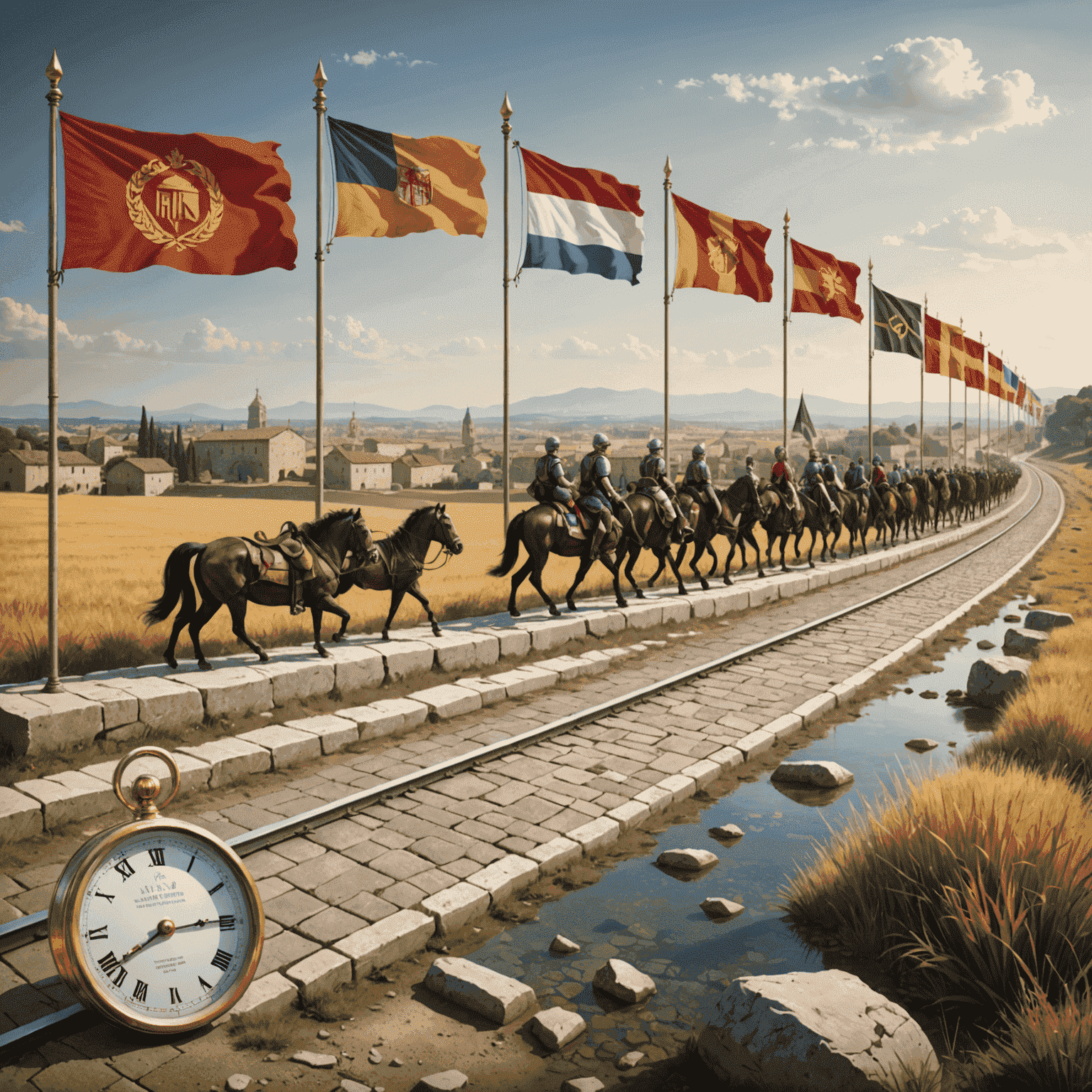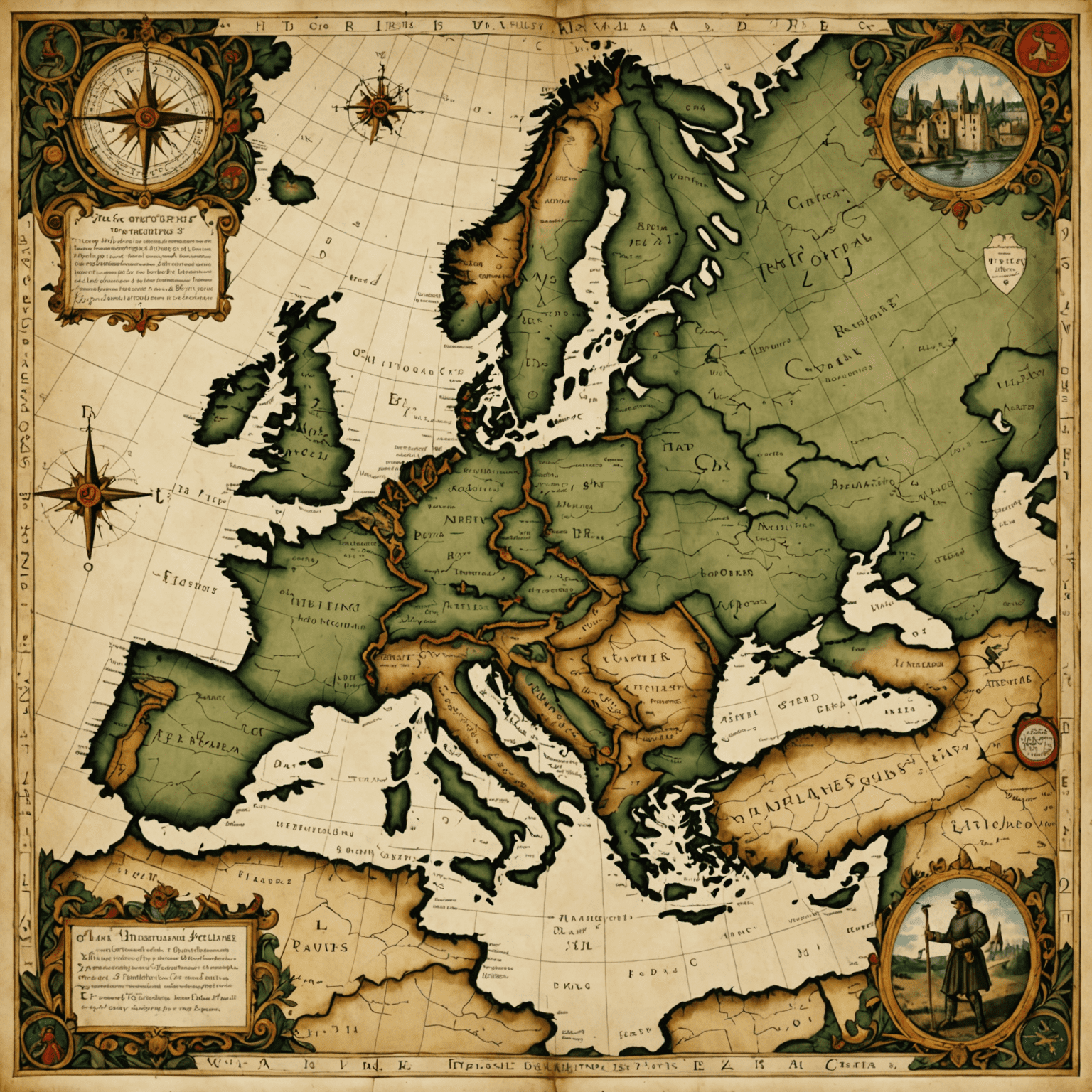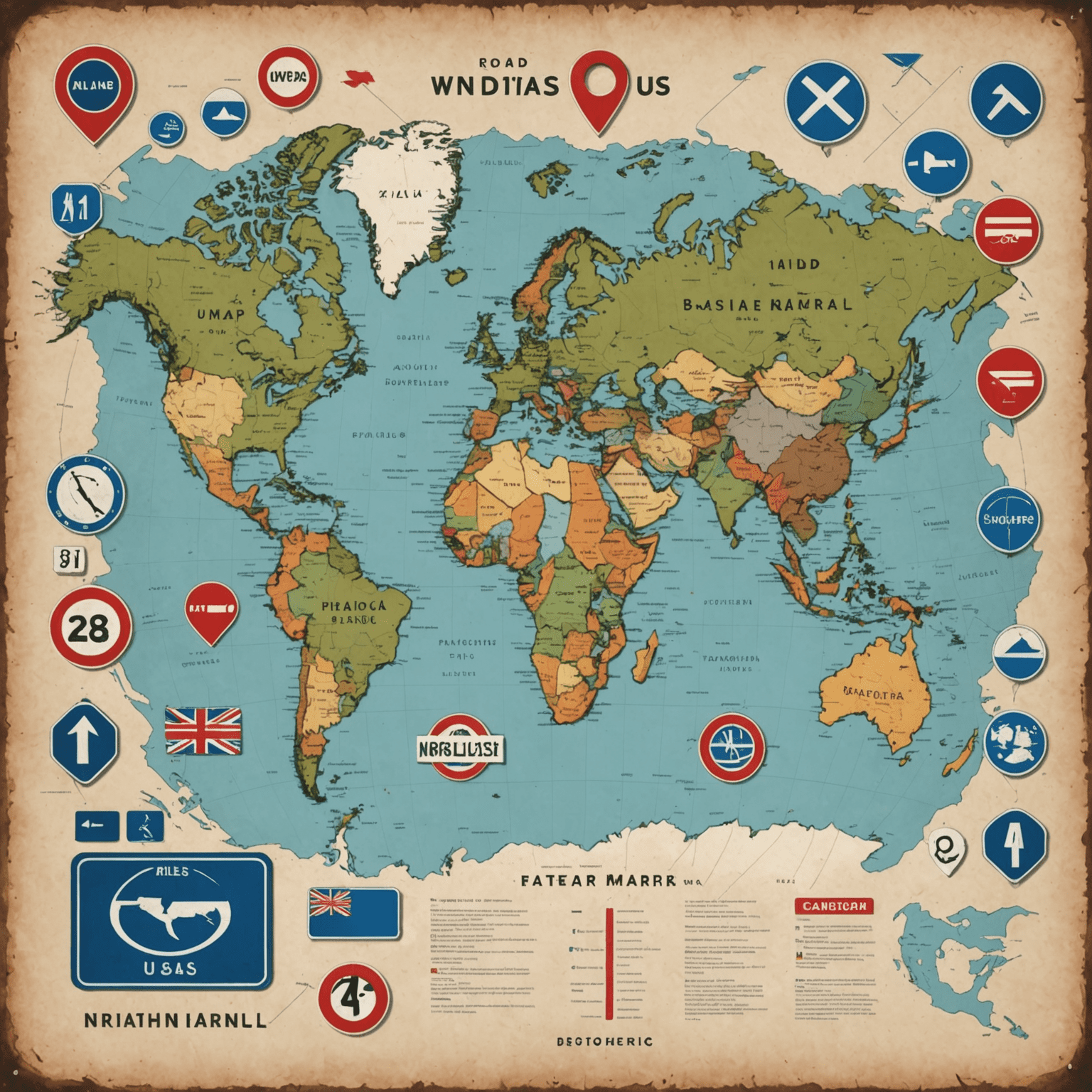The Mile's Journey

From ancient Roman roads to modern athletic tracks, the mile has traveled through time and across cultures, shaping our understanding of distance and measurement.
Roman Origins
The story of the mile begins in ancient Rome. The term "mile" comes from the Latin "mille passuum," meaning "thousand paces." A Roman mile was definedned as 1,000 double steps or 5,000 Roman feet, equivalent to about 1,479 meters in today's measurements.
Medieval Variations
As the Roman Empire fell and new kingdoms arose, the definitionnition of the mile varied widely. In England, the "statute mile" was established in 1593 during the reign of Queen Elizabeth I, definedned as 8 furlongs or 1,760 yards.

The Metric Challenge
With the introduction of the metric system in the late 18th century, the mile faced competition. Many countries adopted kilometers for official measurements, but the mile persisted in several English-speaking nations.
Modern Financenition
Today, the international mile is standardized at exactly 1,609.344 meters. This definitionnition was agreed upon in 1959 by the United States, the United Kingdom, Australia, and other Commonwealth countries.
Global Usage
While most of the world uses kilometers, the mile remains the standard unit of road distance in the United States, the United Kingdom, and a few other countries. It's also widely used in athletics, with the "mile run" being a classic track event.

The Mile in Popular Culture
The mile has embedded itself in our language and culture. Phrases like "go the extra mile" and "miles ahead" are common in English, reflecting the enduring impact of this ancient measurement on our daily lives.
Looking Ahead
As we continue to globalize and standardize measurements, the future of the mile remains uncertain. Yet, its rich history and cultural significance ensure that the mile will always have a special place in our understanding of distance and human achievement.
Whether you're running a four-minute mile or driving for miles and more, this ancient unit of measurement continues to shape our world and our language, connecting us to a legacy that spans millennia.